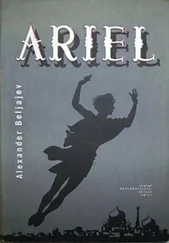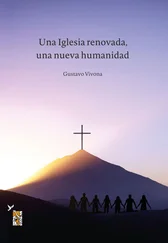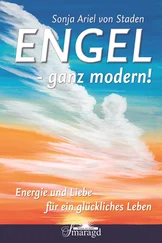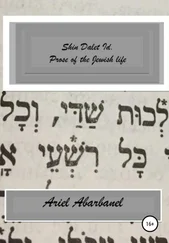Ariel Toaff - Blood Passover
Здесь есть возможность читать онлайн «Ariel Toaff - Blood Passover» весь текст электронной книги совершенно бесплатно (целиком полную версию без сокращений). В некоторых случаях можно слушать аудио, скачать через торрент в формате fb2 и присутствует краткое содержание. Жанр: Религиоведение, на английском языке. Описание произведения, (предисловие) а так же отзывы посетителей доступны на портале библиотеки ЛибКат.
- Название:Blood Passover
- Автор:
- Жанр:
- Год:неизвестен
- ISBN:нет данных
- Рейтинг книги:3 / 5. Голосов: 1
-
Избранное:Добавить в избранное
- Отзывы:
-
Ваша оценка:
- 60
- 1
- 2
- 3
- 4
- 5
Blood Passover: краткое содержание, описание и аннотация
Предлагаем к чтению аннотацию, описание, краткое содержание или предисловие (зависит от того, что написал сам автор книги «Blood Passover»). Если вы не нашли необходимую информацию о книге — напишите в комментариях, мы постараемся отыскать её.
Blood Passover — читать онлайн бесплатно полную книгу (весь текст) целиком
Ниже представлен текст книги, разбитый по страницам. Система сохранения места последней прочитанной страницы, позволяет с удобством читать онлайн бесплатно книгу «Blood Passover», без необходимости каждый раз заново искать на чём Вы остановились. Поставьте закладку, и сможете в любой момент перейти на страницу, на которой закончили чтение.
Интервал:
Закладка:
320
"Quod vidit Annam quadam alia vice comeder modicum de sanguine, quem sic comedit, ponendo illud in quodam ovo coctus" (ibidem).
321
"Dixit quod quidam Magister Jacob Judaeus, modo sunt duo anni, dixit sibi Bonae et Dulcette, quod si quid acciperet de dicto sanguine et iverit ad aliquem fontem clarum et de illo projecerit in fonte, ex postea cum facie se fecerit supra fontem [...] et dixerit certa verba, sine dubio inducet grandines et pluvias magnas [...] et praedictus M. Jacob habebat quendam, super quo erant descripta omnia, ad quae sanguis pueri Christiani valet" (ibidem, p. 43).
322
Deposition of Lazzaro da Serravalle dated 16 December 1475. "Quod Christianis, inimicis fidei Judaice, possunt Judeai facere omne malum et quod lex (Dei) [...] loquitur de sanguine bestiarum" [“That the Jews may do any evil unto Christians, who are the enemies of the Jewish faith, and that the law (of God) […] speaks of the blood of beasts”] (ibidem, p. 53-54).
323
On the Jewish attitude towards lending to Christians at interest, see H. Soloveitchik, Pawnbroking. A Study in the Inter-Relationship between Halakhah, Economic Activity and Commercial Self-Image , Jerusalem, 1985 (in Hebrew); The Jewish Attitude in the High and Late Middle Ages , in D. Quaglioni, G. Todeschini and G.M. Varannini, Credito e usura fra teologia, diritto e amministrazione. Linguaggi a confronto (sec. XII-XVI) , Rome, 2005, pp. 115-127; J. Katz, Hirhurim 'al ha-yachas ben dat le-kalkalah ("Considerations on the Relationship Between Religion and the Economy") , in M. Ben-Sasson (author); Religion and Economy. Connection and Interaction , Jerusalem, 1995, pp. 33-46 (in Hebrew); A. Toaff, Testi ebraici italiani all'usura dalla fine del XV agli esordi del XVII secolo , in Quaglioni, Todeschini and Varannini, Credito e usura , cit., pp.103-113.
324
Desposition of Israel Wolfgang dated 3 November 1475. "Existimant Judaei non esset peccatum comedere aut bibere sanguinem pueri chistiani et dicunt quod lex Dei, data Moysi, non prohibitat eis aliquid facere aut dicere quod sit contra christianos aut Jesus Deum Christianorum, dicens quod ex dicta lege eis prohibitum est foenerari, et tamen tenent Judaei quod nullum sit peccatum foenerari christiano et christianum decipere quovis modo" [“The Jews do not consider it a sin to eat or drink the blood of Christian boys and that the law of God, the so-called Laws of Moses, do not prohibit doing or saying anything at all against Christians or against Jesus the God of the Christians, saying that the said law prohibits them from lending at interest, and yet the Jews do not consider it any kind of sin at all to lend money at interest to Christians and to deceive Christians in any manner whatever”] ([Bonelli], Dissertazione apologetica , cit., p. 53).
325
Cfr. Camporesi, Il sugo della vita , cit., p. 14.
326
Hebrew: Mete' goim enam asurim ha'anaah; en asur ba-anaah ella mete Israel; met goy mutar ha'anaah afilu le-choleh she-en-bo sakkanah ("One may also use the corpse of a non-Jew in curing a sick person who is not in danger of losing his life"). See David b. Zimra, Sheelot w-teschuvot . Responsa, vol. III, Fürth, 1781, no. 548 [= 979]; Abraham Levi, Ghinnat veradim . Responsa ("The Garden of the Rose"), Constantinople, Jonah b. Ja'akov, 1715, Yoreh' de'ah , vol. I, response no. 4; Jacob Reischer, Shevut Ya'akov . Responsa ("The Captivity of Jacob"), vol. III, Offenbach, Bonaventura de Lannoy, 1719, no. 94 (see also the following note). The responses on this topic are based on the opinion expressed in regards to the Tossaphists, the classical Franco-German commentators on the Talmud. In this regard, see also H.J. Zimmels, Magicians, Theologians and Doctors , London, 1952, pp. 125-128, 243-244.
327
Reischer, Shevut Ya'akov , cit., vol. II, Yoreh de'ah , no. 70. For a detailed examination of this response, see D. Sperber, Minhage' Israel, ("The Customs of the Jewish people"), Jerusalem, 1991, pp. 59-65.
328
In this manner, Haim Soloveitchik, intelligently and without reticence, as always, discusses the relationship between the customs of the Ashkenazi Jews and the norms of Jewish law, often in contradiction and mutually incompatible (cfr. Pawnbroking , cit., p. 111).
329
See the illuminating comments in this regard by Daniel Sperber, who discusses and broadens the arguments presented by Soloveitchik (cfr. Sperber, Minhage' Israel , cit., pp. 63-65).
330
H.O. Grodzinksi, Sheelot w-teshuvot Achiezer . Responsa, New York, 1946, vol. III, pp. 66-68 (par. 31).
331
On the magical and necromantic practices of Medieval Ashkenazi Judaism, with particular reference to the creation of the Golem, the artificial anthropoid, see M Idel, Golem. Jewish Magical and Mystical Traditions on the Artificial Anthropoid , New York, 1990.
332
On the ritual murder at Waldkirch (1504), see F. Pfaff, Die Kindermorde zu Benzhausen und Waldkirch im Breisgau. Ein Gedicht aus dem Anfang des 16. Jahrhunderts , in "Alemannia", XXVII (1899), pp. 247-292; Po-Chia Hsia, The Myth of Ritual Murder , cit., pp. 86-110.
333
Cfr. Esposito and Quaglioni, Processi , vol. I, cit.
334
"Predictia quibus (dictus Moises antiquus) emit sanguinem pueri Christiani habebant litteras testimonials factas a suis superioribus, per quas fiebat fides quod portantes illas litteras erant persone fide et quod illud quod portabant erat sanguis pueri Christiani".[“…. (Moses the Old Man said) that those who sell the blood of Christian boys have testimonial letters prepared by their superiors, attesting that those who bear these letters are persons to be trusted and that that which they carried was the blood of Christian boys”]. Mosè da Würzburg added that, when he had been living at Monza fifty years before, he had used Christian blood from an authorized merchant named Süsskind of Cologne (cfr. ibidem, pp. 358-359).
335
For this testimony by Isacco, Angelo da Verona's cook, see G. Divina, Storia del beato Simone da Trento , Trent, 1902, vol. I, p. 109; vol. II, pp. 21-23.
336
On the life and death of Rabbi Shimon Katz, head of the yeshivah of Frankfurt, see R. Yoseph b. Moshè, Leqet yosher , by J. Freimann, Berlin, 1904, p. L1 (par. 132); Germania Judaica , III: 1350-1519 , Tübingen, 1987, pp. 365-366 ( s.v.R. R. Simon Katz v. Frankfurt am Main ). See also I.J. Yuval, Scholars in Their Time. The Religious Leadership of German Jewry in the Late Middle Ages , Jerusalem, 1984, pp. 135- 148 (in Hebrew).
337
On Rabbi Moshè of Halle and his rabbinical activity, see Leqet yosher , cit., vo. XVI (par. 101); Germania Judaica . III: 1350-1519, cit., p. 501 (s.v.R. R. Mosès von Halle). See also Yuval, Scholars in Their Time , cit., pp. 197-207.
338
On certificates of guarantee for permissible food, and in particular for those used at Pesach , in the Ashkenazi communities, see I. Halpern, Constitutiones Congressus Generalis Judaeorum Maraviensium (1650-1748) , Jerusalem, 1953, p. 91, no. 278 (in Hebrew and Yiddish): "(anno 1650). The obligation to inspect foodstuffs of any kind, both food and drink, originating from other communities, existed in every Hebrew community. Anyone taking foodstuffs outside a given community had to equip himself with a certificate of guarantee, written and signed (by the rabbinical authority), attesting that everything had been prepared according to the rules [ she-na'asah be-heksher w-betiqqun ] [...], such as, for example, foodstuffs used at Passover".
Читать дальшеИнтервал:
Закладка:
Похожие книги на «Blood Passover»
Представляем Вашему вниманию похожие книги на «Blood Passover» списком для выбора. Мы отобрали схожую по названию и смыслу литературу в надежде предоставить читателям больше вариантов отыскать новые, интересные, ещё непрочитанные произведения.
Обсуждение, отзывы о книге «Blood Passover» и просто собственные мнения читателей. Оставьте ваши комментарии, напишите, что Вы думаете о произведении, его смысле или главных героях. Укажите что конкретно понравилось, а что нет, и почему Вы так считаете.












